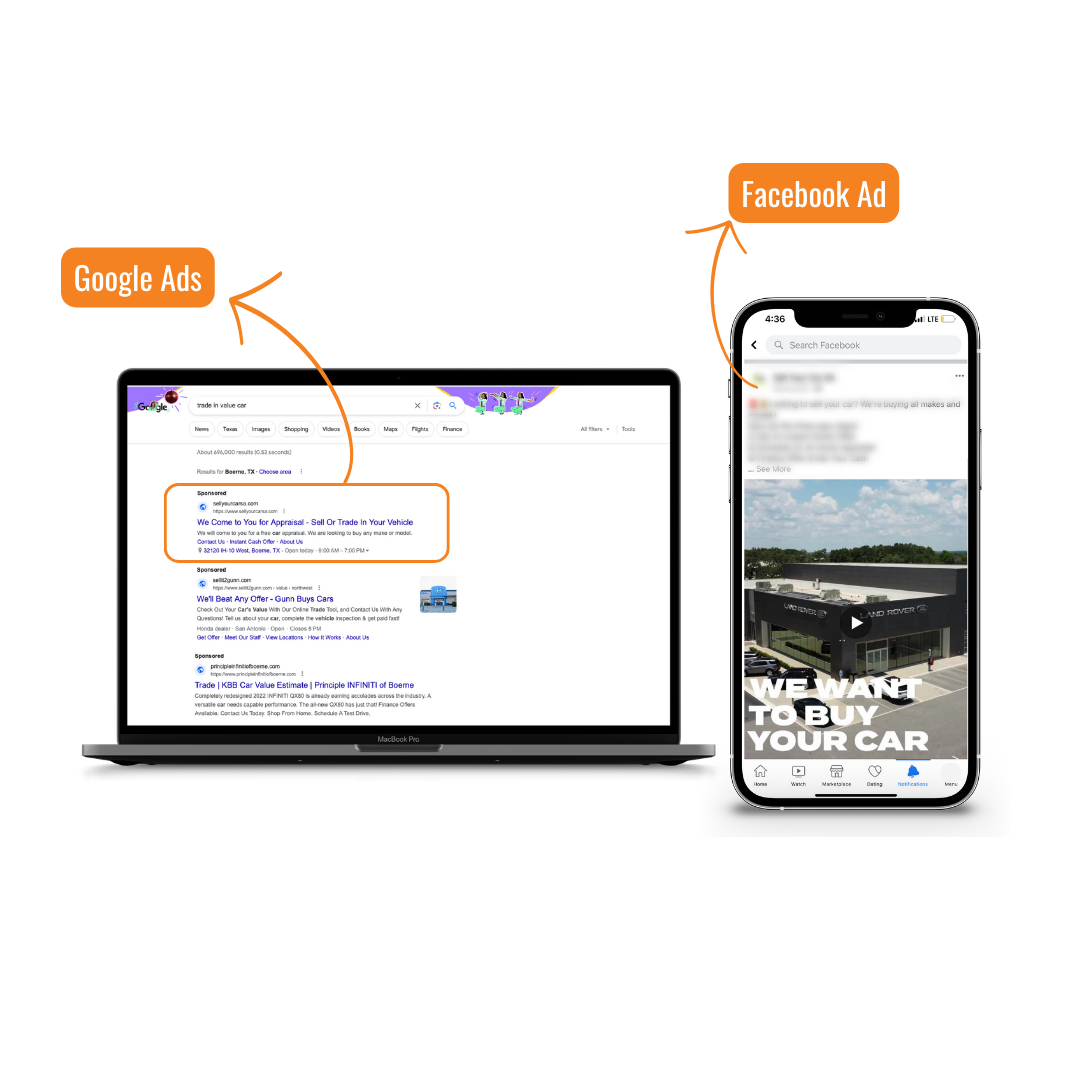Google Ads Vs. Facebook Ads - Is one better for your business?
It’s a common question we get, and we’re glad you came to the experts to learn the difference & better understand why one may be better than the other for your business and goals.
Intent and User Behavior:
Google Ads: Google Ads primarily focuses on capturing users' intent when they actively search for specific keywords or phrases. It displays ads based on the user's search queries, targeting their immediate needs or interests.
Facebook Ads: Facebook Ads, on the other hand, relies on targeting users based on their demographic information, interests, and behaviors. It shows ads to users while they are engaged with the Facebook platform, whether they are actively searching for something or not.
Ad Placement:
Google Ads: Google Ads primarily operates on search engine result pages (SERPs), meaning ads are displayed at the top or bottom of the search results when users search for relevant keywords. They can also appear on other Google-owned properties, such as YouTube or Google Maps.
Facebook Ads: Facebook Ads are primarily shown within the Facebook ecosystem, including the Facebook News Feed, Instagram, Audience Network, and Messenger. They appear as sponsored posts within a user's feed or as ads in the sidebar.
Ad Format:
Google Ads: Google offers various ad formats, including text-based ads, display/banner ads, video ads, shopping ads, and app promotion ads. The format depends on the campaign type and objectives.
Facebook Ads: Facebook provides a wide range of ad formats, such as image ads, video ads, carousel ads (multiple images or videos in a scrollable format), slideshow ads, and collection ads (featuring multiple products). It also supports different objectives, like boosting posts, driving website clicks, or promoting app installations.
Targeting Options:
Google Ads: Google Ads primarily uses keywords and user search intent for targeting. Advertisers select relevant keywords to trigger their ads when users search for those terms. They can further refine targeting based on factors like location, language, device type, and demographics.
Facebook Ads: Facebook offers highly detailed targeting options. Advertisers can target users based on demographics (age, gender, education, etc.), interests, behaviors, connections, and even custom audiences (e.g., uploading a list of customer emails for targeting).
In summary, while Google Ads focuses on capturing user intent through search queries and primarily displays ads on search result pages, Facebook Ads target users based on their demographics, interests, and behaviors within the Facebook platform. The ad placement, format, and targeting options differ significantly between the two platforms.

